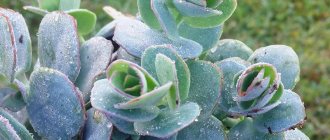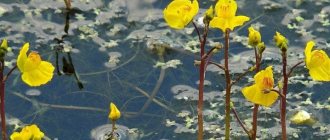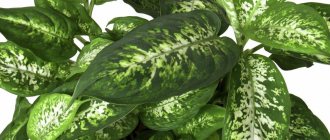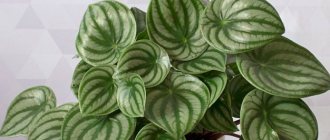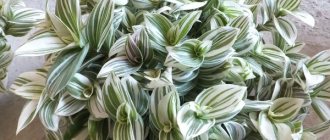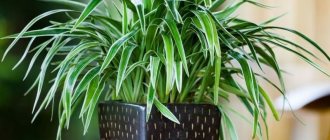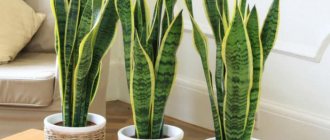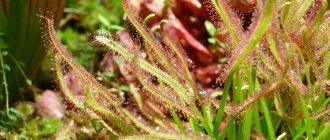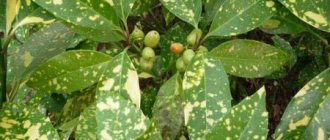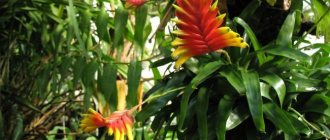Carnivorous plants are amazing representatives of the flora, which have recently become very popular for home keeping. An interesting specimen is Sarracenia. We will discuss this flower and tell you how to grow and maintain such an exotic plant. Let's get started.
Author of the article
Anna Dmitrieva
Gardener with 15 years of experience.
General information
You need to understand what you are going to grow, and only then go to the store for sarracenia. Before practice, a little simple theory.
In nature, the predator is found only in the vast expanses of North America; it is an endemic that is revered in its homeland. But to increase the number of plants, the flower was brought to Ireland, and it took root quite successfully in the local swamps.
The trap leaf looks like a kind of bowl or urn that lures insects; the victim cannot get out of the digestive juice and goes to feed.
The principle of catching insects, how they feed
Pachistachis yellow and red - how to care for the plant
The Sarracenia flower resembles a water lily. Sweet juice secretes at its edges, which is attractive to insects. When they come to feed, they find themselves on the inner surface, covered with hairs inclined downwards. It is impossible to stay on this surface.
Insects fall down, falling into a special liquid that contains many bacteria. They break down insect remains. The remaining parts feed on the larvae. Waste products are nutrients that are absorbed by the plant.
Insect hunting
Varieties
The unusual silhouette and bright color attracts not only prey, but also breeders who breed all representatives of this family:
Darlingtonia
The flower somewhat resembles a snake. This representative of the Sarracenia family grows in swamps, and it is very rare to encounter it.
Heliamphora
This subspecies contains 15 separate species, all of which belong to the Sarracenia family. A small and very picturesque representative of the predatory flora, it is popular among fans of the exotic.
Sarracenia
The heroine of our article. About 11 different plants are attributed to this genus, the differences are mainly visual, so our recommendations will be correct for any variety.
The flowers have 2-3 cups for catching prey, but some specific species, like the yellow Sarracenia, can grow over large areas. The height of such a plant does not exceed one meter, the fishing jug reaches a length of about 80 cm, and is located practically at a right angle.
But do not think that each variety is large in size. Some species have cup-shaped leaves of modest dimensions. Many plants are only 40cm in height, there are also more miniature species, 10cm each.
The color of most sarracenias is green; there are purple and yellow specimens. A certain lid is clearly visible above the bowl, which prevents flooding during rain and prevents the insect from leaving the trap.
When hunting, the plant lures small animals with its aroma and bright colors. The nectar attracts the insect and it inadvertently gets inside the bowl. Special fibers covering the walls of the jug from the inside will not allow the prey to fly out, since they are quite hard and interfere with movement outward.
The produced juice gradually digests the weakened prey and thereby feeds the plant. Each victim brings enough nitrogen, magnesium and other elements to continue growth.
Botanical characteristics
The Italian sound in the name of the plant is due to the French biologist Joseph Pitton de Tournefort. Who named the predator in honor of his Canadian colleague M. Sarrazin. Who first described this flower. It was exactly in 1700.
The plant has a bizarre appearance: giant leaves curl into a rosette and form a jug with a lid. Looks like a cobra. From one root there can be up to 40 such jugs located around. In the center there is one red flower on a long stem. He is the main attraction. It smells fragrant. Insects fly in. The smell is intoxicating due to the content of sedatives. Therefore, the insect is unable to escape from the zone of attraction. He falls asleep on the fly and falls down into the jug. Or they sit on one of them, according to this principle they lose their vigilance and slide down like clockwork. That is, nectar.
Next, the mechanism is configured “from” and “to”. A couple of insects are captured - the lid closes. So that suddenly the rain does not dilute the digestive juice. Sometimes animals like frogs and birds climb into the traps for insects. An unenviable fate befalls - to turn into food for sarracenia.
Despite its formidable appearance, it is considered a marsh grass. Perennial, but grass. Doesn't fit with the idea of grass, does it?
Rhizome - developed.
Leaf color: mix of green, purple and yellow.
The lower part of the trapping leaves is scaly.
The top one is short-cut with a wide neck.
Benefits of the plant
The benefits of such a plant for nature are invaluable, since birds often find light food in sarracenia, pecking insects from the bowl. A sufficiently hungry sarracenia can digest even a small frog, but the plant is absolutely not dangerous for humans.
Moreover, there are insects that are able to live and reproduce right inside the flower cup, since they independently produce substances that reduce the influence of plant juices. Such a symbiosis harms the plant, since insects destroy the walls of the flower and prevent it from hunting. At home, this is impossible if the plant is fed correctly.
Sarracenia at home is a fragrant and noble species that requires the right approach. Let's look at caring for the plant, but first, a photo of this wonderful flower.
Growing problems, diseases and pests
The most dangerous pests for Warframe twilight sarracenia are spider mites and aphids. To prevent infection, the plant is regularly inspected. If insects are found, they are washed off with warm water. Damaged parts of the plant are separated and destroyed. After this, they are sprayed with specialized preparations.
Sarracenia twilight, thanks to its decorative properties, serves as an excellent decoration for an apartment or summer cottage. The ability to destroy insects is an advantage of a perennial.
How to care for sarracenia
Surely you are interested in the moment of feeding of a predatory species. Let's start with this, because many beginners are afraid to feed their plant insects.
You may be interested in the article: Agapanthus: growing and care at home.
Flower food
Indoor sarracenia does not need to be fed insects on its own. The plant will attract small midges on its own and will digest the resulting prey for quite a long time.
Additional fertilizing can clog the jar and cause it to wilt, so don't put insects inside the Sarracenia cup, as this will only make things worse.
The soil
Now about the soil, since the health of the flower directly depends on the correct soil mixture. In its natural environment, the plant prefers swamps, and we need to replicate such conditions, but on a smaller scale. Required:
- peat;
- perlite;
- sand, preferably the kind for construction purposes.
This soil is as close as possible to swampy soil. The mixing proportions are as follows: 4 parts peat, two parts perlite and a little sand.
Features of transplantation, how to choose a suitable pot
Sarracenia Warframe grows quickly. With careful care, the roots grow well. Before the flower becomes crowded, it should be replanted. The best time for this is immediately after the end of the rest period.
The pot is made of plastic or glass. Drainage holes are made in the bottom part. Provide it with well-drained soil. To do this, expanded clay or fine gravel is poured onto the bottom before planting.
On a note! The pots should not be porous - they are not suitable for growing sarracenia due to the fact that they allow liquid to pass through perfectly.
Flower propagation
Most likely, you will like sarracenia so much that you will rush to get a second flower, or give the plant to your loved ones. To grow, you need to take several seeds from an adult plant. The seeds are planted in peat until the first shoots, then the young sarracenia is planted in the already described soil and cared for in the usual manner.
Seeds must be stratified, that is, kept at low temperatures. This procedure can last for months, but the result of the efforts will fully pay off the expectations.
Some people prefer to propagate their flowers by planting parts from adult plants in the ground. This technique has the right to life, but keep in mind that parts can only be cut from a sufficiently strong plant. A weak individual is unlikely to survive such a procedure.
How does a flycatcher reproduce?
For propagation, seeds or root division are often used. Some varieties are hybrids, so it is important to consider that only those purchased in specialized stores are used to grow them.
Seeds
The plant can be propagated using seeds. Peat pots are used for this. After the sprouts appear, they are picked and placed in separate pots. Before planting, stratification is done. To do this, the seeds are kept in the cold for 1-2 months.
By dividing the rhizome
Sarracenia plant reproduces through the root system. To do this, the part with the sprouts is separated from the roots and transplanted to a new location. This should not be done too often. Otherwise, the roots become small.
Growing on site
Pests of Sarracenia
As you remember, some insects can cause significant damage to a flower. In particular, these are aphids, mites and other pests. It is not difficult to fight them; for this, folk remedies such as garlic solution and other mixtures are used. You need to be careful with pesticides; the delicate structure of the predator can be damaged by the chemicals.
In conclusion, we would like to wish you good luck in keeping your sarracenia. Don't worry, the plant is no different from other indoor varieties, and can also surprise its owners. Good luck!
Brief description of cultivation
- Temperature . The flower does not like intense heat and is kept in cool conditions even in spring and summer - at temperatures ranging from 16 to 20 ° C; in winter, a cool dormant period is required at a temperature of - 6 - 10 ° C.
- Lighting . Shading from direct rays of the sun only during the daytime in spring and summer; sunbathing for several hours daily is required in the morning and evening.
- Watering and humidity . Keep the soil evenly moist throughout the year by watering sarracenia only with purified or distilled water without calcium salts. Air humidity is high.
- Trimming . Sanitary - removing old and diseased shoots, pinching fading buds in order to maintain an attractive appearance. With the help of formative pruning, the compact shape of the flower is maintained and the plants are rejuvenated.
- Soil . A nutrient-poor substrate based on high-moor peat with an acidic pH level.
- Feeding . Sarracenia should not be fed with mineral fertilizers - it is better to leave this predatory flower to insects.
- Reproduction . Seeds sown in spring, dividing large plants when transplanting.
Sarracenia. Maintenance and care. Predator plant - Sarracenia.
Choosing a container or pot
A pot or container for sarracenia must be made of plastic or glass. There must be drainage holes at the bottom to remove excess moisture.
Features of transplantation
Sarracenia should be replanted systematically, as its root system develops quite quickly. It is recommended to replant after the end of the dormant period - in the spring months.
For transplantation, use a container 1–2 cm larger in diameter than the previous one.
Reproduction methods
Sarracenia is propagated in two ways:
- Seeds. Before planting, seed material is prepared by cold stratification. To do this, the seeds are soaked, placed in moistened sand, coco-soil or cotton cloth and placed in a cold place (temperature no higher than 6ºC) for 1–2 months. Prepared seeds are planted on peat in Petri dishes or small glass containers. Grown seedlings are planted in separate small pots.
- By dividing the rhizome. This method is used only for well-grown, strong, overgrown plants. The rhizome of the bush is divided into no more than 2 parts, planting each separately. New plants will bloom no earlier than in 3-4 years.
Diseases and pests
Sarracenia can be susceptible to the following types of insect attacks and various diseases:
- gray rot - often occurs in winter; to remove it, you should remove the affected areas and treat the cuts with a fungicidal preparation;
- root rot - occurs due to excessive watering or insufficient drainage, in order to get rid of it you need to adjust the watering of the flower and replant it;
- aphids, mealybugs or spider mites - appear due to low humidity and high ambient temperatures; to remove parasites, they are washed off with soap and water, the damaged parts of the plant are cut off and the flower is treated with insecticidal agents;
- yellow leaves of the plant - the defect occurs due to lack of lighting and is eliminated by additional illumination with lamps;
- dried leaves - signal insufficient soil moisture and irregular watering;
- the plant sheds its leaves and does not bloom - these phenomena can be caused by improper environmental conditions and improper care during the wintering period.
Growing conditions for indoor sarracenia
Sarracenias overwinter in a leafless state and require at least 3-4 months of cold and darkness. And during the growing season they prefer soft sun and stable temperatures.
Lighting and placement
Sarracenias are photophilous and will suffer without at least a few hours of direct sun, ideally they need 6 to 8 hours. But in a room format on a south-facing window, they are often susceptible to burns in the summer. Morning or evening sun on eastern and western windowsills are considered the best option for this predatory plant. A lack of light is easily recognized by the loss of bright colors and the elongation of thin trap leaves. Sarracenias respond well to additional lighting.
During the dormant period, from autumn, in parallel with the general decrease in temperature, it is necessary to reduce lighting until the growing season stops completely. During winter, plants are kept in a dark place.
The main feature of Sarracenia is its intolerance to turns and rearrangements. Usually the plant reacts sharply to even a slight displacement relative to the light source.
Planting and replanting the carnivorous plant Sarracenia
1. Wet the substrate thoroughly with distilled water. 2. Place the moistened substrate in a plastic pot, filling it to the very edges, to the top. There is no need to compact the substrate very tightly. 3. Make a deep hole in the center. 4. Cut and remove the packaging from the plant, remove the napkin from the root system. If you are replanting a plant from a pot or from a mini-greenhouse, use tweezers, loosen the substrate, and carefully remove the plant with its root system. Be careful, the roots are thin and long. 5. Carefully lower the entire root system and rhizome of the plant in the center of the pot into the hole made in the substrate. It is very important that the rhizome of the plant is buried, but the upper part of the rhizome may slightly protrude from the substrate. Try to touch the root of the plant with your hands as little as possible. For these purposes, it is very convenient to use tweezers or medical gloves. 6. Bury the remaining hole near the root and rhizome. There is no need to hill up the plant. The substrate should be positioned horizontally to the very edge of the pot. 7. Place the planted pot with the plant in a deep tray. Pour distilled water into the tray to fill 2/3 of the pot. 8. In summer, after planting, place the plant under diffused lighting for 3-4 days. After this time, place the plant in bright sunlight. In autumn, spring and winter, when the sun is not very scorching, after planting, immediately place the plant in bright light
Types with descriptions and photos
Purple
The plant has flowers of a purple or greenish-purple hue, which have a light violet aroma.
A feature of Sarracenia purpurea is the lack of enzymes for digesting food.
However, the plant still belongs to the carnivorous species, since in its trap pitcher a special ecosystem has formed in which the Metriocnemus and Vayomaia mosquito larvae live. These mosquitoes, when eating other insects, release waste products that are absorbed by Sarracenia purpurea.
Yellow
Sarracenia yellow was first described in 1753 by the Swedish biologist C. Linnaeus. The plant has leaf blades collected in bright green jugs with red veins. Flowering occurs in the first months of spring. The flowers are yellow in color and emit a strong, unpleasant odor.
The flower jugs are equipped with a special horizontal lid that prevents water from getting inside, which allows the paralyzing effect of nectar on insects not to be reduced.
